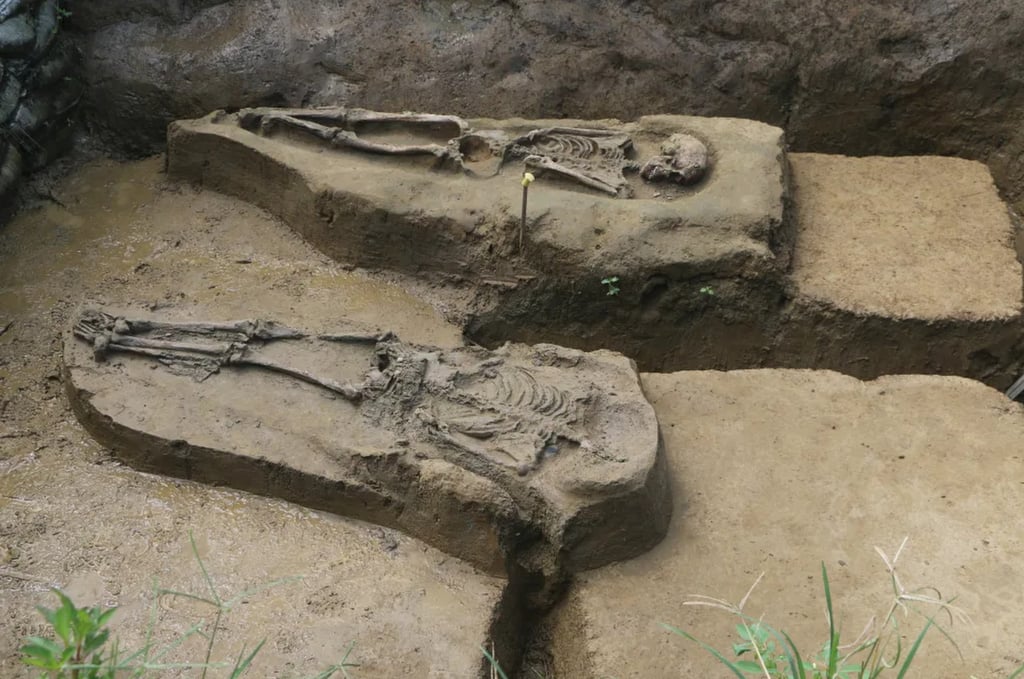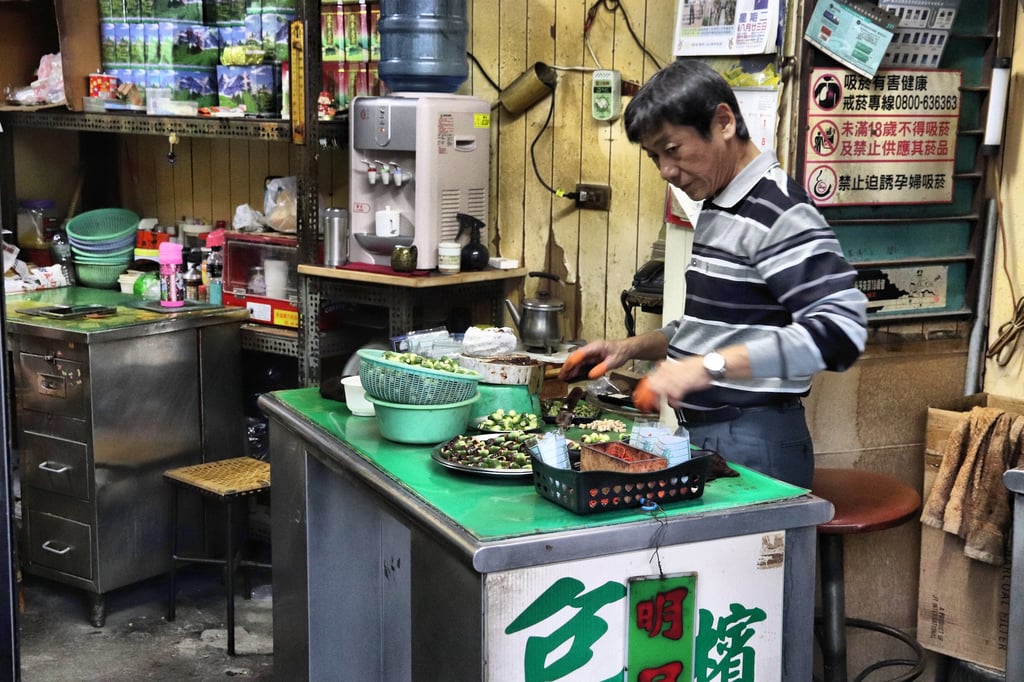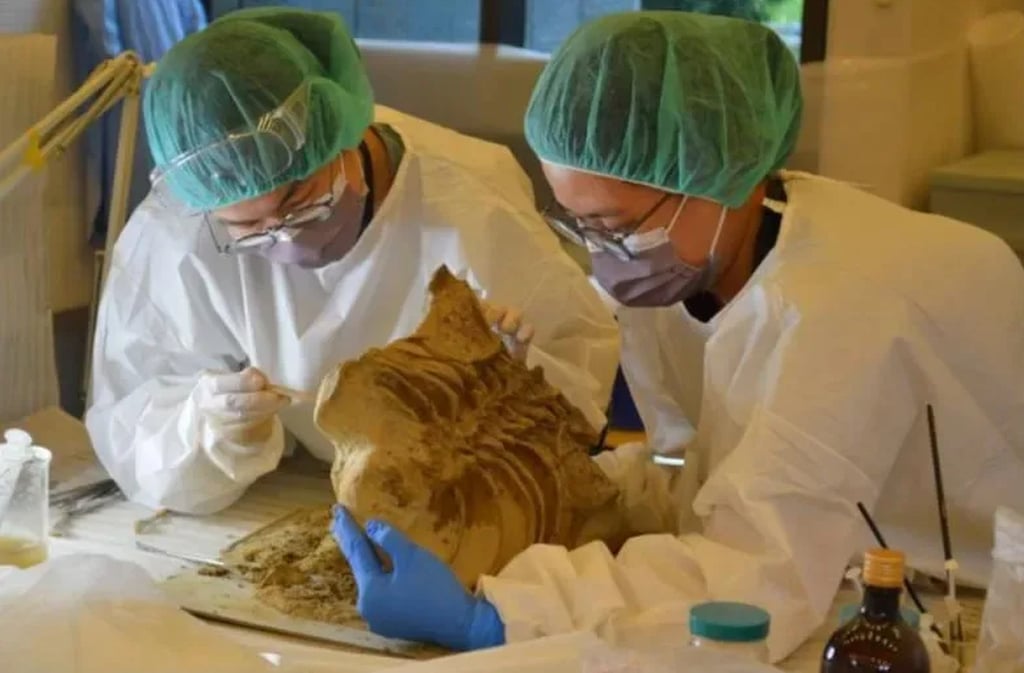
2,500-year-old Taiwan human skeletons indicate indigenous tribes on island chewed betel nuts
- Chewing betel nuts creates a high for users, features bright red juice that stains teeth
With its brilliant red juice and distinctive colouration of the teeth and gums, betel nuts are a well-known oral stimulant drug in Asia.
Chewing betel quids is deeply integrated into various cultures in the region, and a recent discovery in Taiwan offers evidence that the habit has persisted in Asia for thousands of years.
A June update from a long-term excavation project in Taiwan said that two skeletons, estimated to be between 2,500 and 2,700 years old, exhibited signs of betel seed consumption.
These two skeletons were found in tombs discovered in 2021 during the construction of a railway project in Chiayi City in southwestern Taiwan. The tombs of 13 individuals have been found during the excavation so far, and five of them contained near complete skeletons. The archaeology project is expected to be completed in 2026.

According to the paper Taiwan News, the teeth of these two human skeletons featured red mineral stains, which researchers believe are remnants of betel seed juice. The researchers said it is evidence that chewing betel nuts was common on the island thousands of years ago.
Betel quids are typically made by slicing the dried nuts, mixing them with slaked lime, and wrapping the concoction in a betel leaf, which is then chewed. The slaked lime causes microabrasions on the lips, allowing the betel nuts’ stimulant effect to enter the bloodstream.
Making betel quids is the common form of ingestion in modern days, but there is no evidence to indicate the method of consumption for betel nuts thousands of years ago.
While betel nuts have a long tradition in Asia and are deeply intertwined with many regional cultures, the drug has been proven to be carcinogenic.

In Taiwan, 5,400 men are diagnosed with oral cancers annually, and between 80 and 90 per cent of them chew betel nuts, according to the BBC.
As tobacco use has spread throughout Asia, people increasingly mix tobacco with betel quids. A 2022 study for the National Library of Medicine has found that 50 per cent of betel chewers also integrate tobacco into their habit, increasing the carcinogens they are ingesting.
Recently, governments have recognised the potentially deadly effects of betel nuts but are navigating how to ban the product while acknowledging their traditional cultural importance.
In Port Moresby, the capital of Papua New Guinea, the general public largely ignored a 2013 ban on selling betel nuts or chewing betel quids.
As for the betel-chewing ancients, the skeletons were buried in a prone position, which means the person was buried lying flat on their chest with their head turned to the side. Additionally, all of the heads were pointing to the West.

According to Taiwan News, this type of burial would be considered unlucky in traditional Chinese culture, but the excavated peoples were from different ethnic and religious backgrounds than those from China.
Additionally, burial practices diverged from those of other tombs found in Taiwan from the early Neolithic period. Specifically, the Taiwanese news outlet UDN reported that a different site featured bodies buried in a north-south direction, while another set of tombs featured bodies that all faced east.
The differences suggest that ancient Taiwan was inhabited by people of different ethnic groups who followed different religious traditions.

